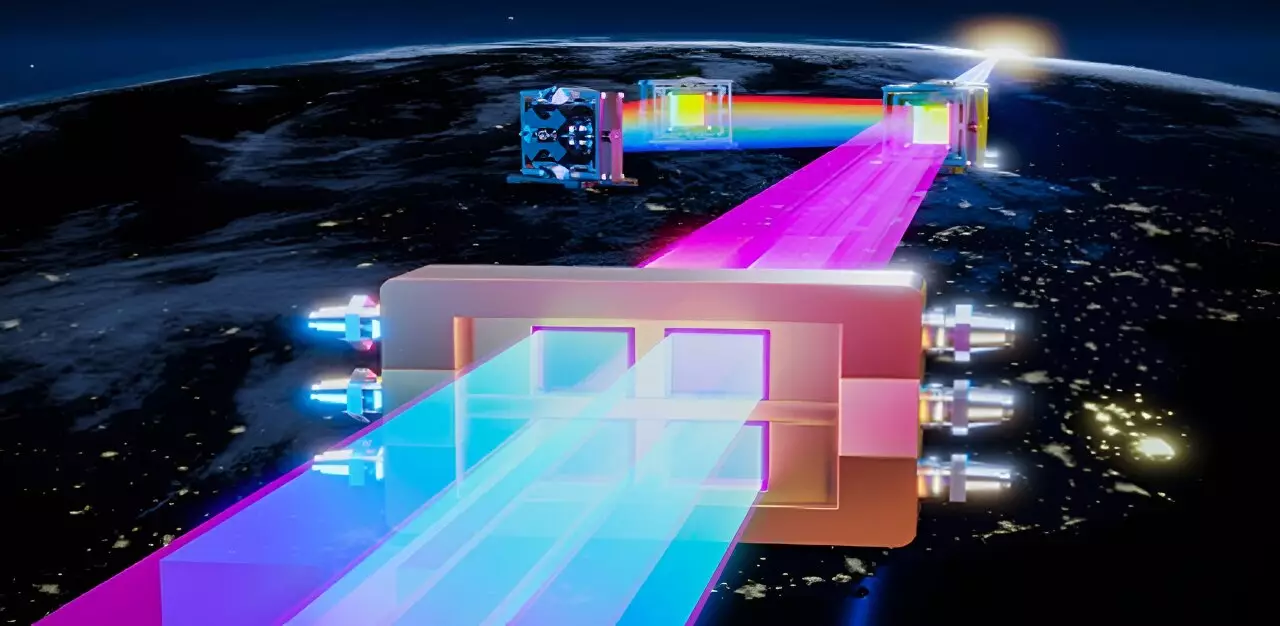Ultra-intense ultrashort lasers have expanded their scope of applications over the years, spanning across various fields such as basic physics, national security, industrial services, and healthcare. These lasers have proven to be an invaluable tool for research in strong-field laser physics, particularly in areas such as laser-driven radiation sources, laser particle acceleration, vacuum quantum electrodynamics, and much more.
Over time, there has been a significant increase in the peak power of ultrashort lasers. For instance, the power of lasers has surged from the 1-petawatt “Nova” in 1996 to the 10-petawatt “Shanghai Super-intense Ultrafast Laser Facility” (SULF) in 2017, and the 10-petawatt “Extreme Light Infrastructure—Nuclear Physics” (ELI-NP) in 2019. This remarkable advancement can be attributed to a shift in the gain medium used for large-aperture lasers, transitioning from neodymium-doped glass to titanium:sapphire crystal. By adopting this new gain medium, the pulse duration of high-energy lasers decreased from approximately 500 femtoseconds (fs) to around 25 fs.
Although the adoption of titanium:sapphire crystal has greatly enhanced laser power, there seems to be an upper limit for titanium:sapphire ultra-intense ultrashort lasers at 10-petawatt. Researchers exploring the development of 10-petawatt to 100-petawatt lasers have typically moved away from titanium:sapphire chirped pulse amplification technology, favoring optical parametric chirped pulse amplification technology instead. This switch presents significant challenges due to the low pump-to-signal conversion efficiency and the poor stability of spatiotemporal-spectral energy associated with the new technology.
Despite the hurdles faced by optical parametric chirped pulse amplification technology, the titanium:sapphire chirped pulse amplification technology retains immense potential for the future development of ultra-intense ultrashort lasers. As a mature technology that has already realized two 10-petawatt lasers in China and Europe, titanium:sapphire crystal, with its energy-level-type broadband laser gain medium, offers a promising pathway forward.
One of the primary challenges encountered with titanium:sapphire crystal is transverse parasitic lasing, which occurs when amplified spontaneous emission noise hampers signal laser amplification along the crystal diameter. The current maximum aperture of titanium:sapphire crystals can only support 10-petawatt lasers. Even with larger crystals, laser amplification is still not feasible due to the exponential increase in transverse parasitic lasing with crystal size.
To address this challenge, researchers have devised an innovative approach involving the coherent tiling of multiple titanium:sapphire crystals. This breakthrough method, as detailed in Advanced Photonics Nexus, surpasses the existing 10-petawatt limit associated with titanium:sapphire ultra-intense ultrashort lasers. By tiling the crystals together, the aperture diameter of the entire crystal is effectively increased, reducing transverse parasitic lasing within each individual crystal.
Lead author Yuxin Leng, from the Shanghai Institute of Optics and Fine Mechanics, highlights the success of the tiled titanium:sapphire laser amplification in their 100-terawatt (0.1-petawatt) laser system. The team achieved near-ideal laser amplification with this technology, boasting high conversion efficiencies, stable energies, broadband spectra, short pulses, and small focal spots.
The implementation of coherently tiled titanium:sapphire laser amplification provides a cost-effective and uncomplicated route to surpass the current 10-petawatt limitation. By incorporating a 2×2 coherently tiled titanium:sapphire high-energy laser amplifier into existing facilities such as China’s SULF or the EU’s ELI-NP, the current 10-petawatt capacity can be expanded to a staggering 40-petawatt. Moreover, the focused peak intensity could potentially increase by almost 10 times or more, unlocking new experimental possibilities in the realm of strong-field laser physics.
The introduction of coherently tiled titanium:sapphire laser amplification promises to revolutionize the capabilities of ultra-intense ultrashort lasers, extending their reach in various fields of research. With breakthroughs like this, researchers can further explore the potential of these lasers and push the boundaries of what is currently deemed possible. As we venture into the future, the advancement of ultra-intense ultrashort lasers will undoubtedly continue to shape and transform a multitude of industries.



Leave a Reply